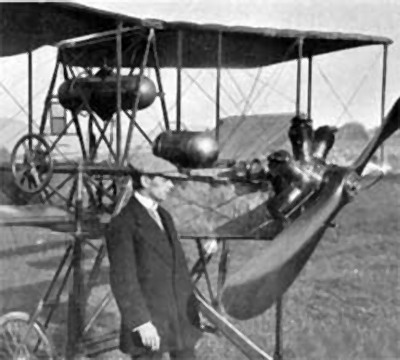Dufaux 4 on:
[Wikipedia]
[Google]
[Amazon]
__NOTOC__


 The Dufaux 4 was an experimental aircraft built in
The Dufaux 4 was an experimental aircraft built in
Swiss Museum of Transport
Geneva aviation pioneers
{{Dufaux aircraft Biplanes Single-engined tractor aircraft 1900s Swiss experimental aircraft 4 Aircraft first flown in 1909


 The Dufaux 4 was an experimental aircraft built in
The Dufaux 4 was an experimental aircraft built in Switzerland
). Swiss law does not designate a ''capital'' as such, but the federal parliament and government are installed in Bern, while other federal institutions, such as the federal courts, are in other cities (Bellinzona, Lausanne, Luzern, Neuchâtel ...
in 1909 and which was originally constructed as an unnamed biplane
A biplane is a fixed-wing aircraft with two main wings stacked one above the other. The first powered, controlled aeroplane to fly, the Wright Flyer, used a biplane wing arrangement, as did many aircraft in the early years of aviation. While a ...
, the third aircraft constructed by the brothers Armand and Henri Dufaux. The aircraft was entirely conventional for the era - a two-bay biplane with unstaggered wings of equal span and a triangular-section fuselage. Construction began in mid-September 1909 and work proceeded rapidly, as the brothers hoped to claim a CHF 1,000 prize put up by the Automobile Club de Suisse for the first Swiss-built aircraft to fly a 1 km closed-circuit.
In early December, flight tests commenced at a field in Corsier
Corsier (, locally ) is a municipality of the Canton of Geneva, Switzerland.
History
Corsier is first mentioned in 1297 as ''Corsiacum''. Between 1816-58 Corsier and Anières formed a single municipality.
Geography
Corsier has an area, , of ...
. Although the machine made a few hops, it would not fly. The Dufaux brothers concluded that the field chosen was too small to give the aircraft enough room to build up speed for takeoff, so they selected a new location for their tests in Viry, in neighbouring France
France (), officially the French Republic ( ), is a country primarily located in Western Europe. It also comprises of Overseas France, overseas regions and territories in the Americas and the Atlantic Ocean, Atlantic, Pacific Ocean, Pac ...
. The aircraft was assembled there on December 16 and a number of successful flights were made that same afternoon. The following day, the aircraft refused to takeoff on a number of attempts, but finally became airborne late in the afternoon. During this flight, at an altitude of 15 metres (50 ft), Henri attempted to bank the aircraft, but instead, it sideslipped to the ground. Both wings and the propeller were destroyed in the crash, but Henri was completely uninjured and the engine
An engine or motor is a machine designed to convert one or more forms of energy into mechanical energy.
Available energy sources include potential energy (e.g. energy of the Earth's gravitational field as exploited in hydroelectric power ...
was undamaged.
The brothers quickly rebuilt the machine in time to display it at an aviation meet at Colombier, but due to the inclement weather, did not attempt to fly it. By this time the brothers had started building the design, now dubbed the Dufaux 4, in series and were accepting orders for aircraft. In May, the aircraft was demonstrated for the Swiss military, but the brothers were informed that the aircraft was not suitable for military purposes.
The Dufaux 4 is perhaps best remembered for a successful aerial crossing of Lake Geneva
, image = Lake Geneva by Sentinel-2.jpg
, caption = Satellite image
, image_bathymetry =
, caption_bathymetry =
, location = Switzerland, France
, coords =
, lake_type = Glacial lak ...
, performed by Armande on 28 August. He flew from St. Gingolph to Geneva
Geneva ( ; french: Genève ) frp, Genèva ; german: link=no, Genf ; it, Ginevra ; rm, Genevra is the second-most populous city in Switzerland (after Zürich) and the most populous city of Romandy, the French-speaking part of Switzerland. Situa ...
at an altitude of around 150 m (500 ft), taking 56 minutes and 5 seconds for the crossing, and collecting a prize of CHF 5,000 that had been put up by the Perrot-Duval Company for this feat.
An example is preserved at the Swiss Transport Museum
The Swiss Museum of Transport or Verkehrshaus der Schweiz (literally "Transportation House of Switzerland") in Lucerne opened in July 1959 and exhibits all forms of transport including trains, automobiles, ships and aircraft as well as communicati ...
.
Specifications
References
* * * * *Swiss Museum of Transport
Geneva aviation pioneers
{{Dufaux aircraft Biplanes Single-engined tractor aircraft 1900s Swiss experimental aircraft 4 Aircraft first flown in 1909